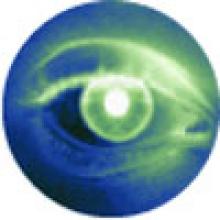Some patients have sub-syndromal depressive symptoms that occur seasonally. DSM-IV would probably classify them as “mood disorder, not otherwise specified,” and that group has not been studied extensively.
Specify if:
With seasonal pattern (can be applied to the pattern of major depressive episodes in bipolar I disorder, bipolar II disorder, or major depressive disorder, recurrent)
- There has been a regular temporal relationship between the onset of major depressive episodes in bipolar I or bipolar II disorder or major depressive disorder, recurrent, and a particular time of the year (e.g., regular appearance of the major depressive episode in the fall or winter). Note: Do not include cases in which seasonal-related psychosocial stressors (e.g., regularly being unemployed every winter) create an obvious effect.
- Full remissions (or a change from depression to mania or hypomania) also occur at a characteristic time of the year (e.g., depression disappears in the spring).
- In the past 2 years, two major depressive episodes have occurred that demonstrate the temporal seasonal relationships defined in criteria A and B, and no nonseasonal major depressive episodes have occurred during that same period.
- Seasonal major depressive episodes (as described above) substantially outnumber the nonseasonal major depressive episodes that may have occurred over the individual’s lifetime.
Source: DSM-IV-TR
What causes SAD?
Research is ongoing, but the cause of SAD is not yet fully understood, although hypotheses have been developed. The four main hypotheses relate to duration of sunlight, changes in the circadian cycle, and secretion of the “hormone of darkness,” melatonin.
Photoperiod hypothesis. The shortening of the photoperiod—duration of sunlight—during autumn and winter may explain winter depression. Some research suggests that patients with SAD have an exaggerated melatonin response to shorter days and longer nights. For example, Wehr et al8 found that SAD patients secrete melatonin approximately 30 minutes longer per day in the winter, compared with controls.
Phase-delay hypothesis. Core body temperature is considered one of the most reliable markers of circadian rhythm. The nadir core body temperature occurs earlier than normal in a person whose circadian rhythm is “phase-advanced” and later than usual in those with “phase-delayed” circadian rhythms. Patients with seasonal affective symptoms generally reach their lowest body temperature of the day earlier than do controls.
Lewy et al,9 who proposed the phase-delay hypothesis, observed that melatonin secretion appeared to be delayed in patients with SAD. Some studies have supported this hypothesis, demonstrating greater benefit of bright light treatment when administered early in the morning than later in the day. Other studies, however, have shown benefit from light exposure late in the day.10
Reduced-amplitude hypothesis. SAD sufferers have dampened circadian rhythms, and bright light may increase the amplitude of the rhythms. There is little evidence for this hypothesis.
Melatonin hypothesis. Melatonin does not appear to cause depression. Looking at melatonin secretion patterns in conjunction with circadian phases, however, may offer new insights.8 Several studies have shown that manipulating the timing of melatonin secretion affects mood.
Cryptochrome, a photoreceptor in the retina, may be responsible for transmitting the photosignal to the elements of the circadian clock that regulate melatonin secretion. The pineal gland modifies its secretion of melatonin in response to the amount of light exposure (Box 3).8,11
Light therapy
Bright light therapy has been supported by placebo-controlled trials and is first-line treatment for patients with SAD.1 Bright light therapy is usually dosed at 2,500 lux for 2 hr/day or 10,000 lux for 30 min/day at eye level.12 The best evidence supports administering light therapy in the morning, generally between 6 and 10 AM. As described by Terman,13 “larks”—people who go to bed early and get up early—need earlier light than “owls”—people who stay up later and sleep later.
When light strikes the eye, it is well known that vitamin A-based photo pigments, cones, and rods receive the signal and transmit it via the optic tracts to the occipital cortex. But if light plays a role in the pathophysiology of seasonal affective disorder, how does light signal the other elements of the circadian system?
Cryptochrome, a photoreceptor in the retina, may be responsible for transmitting the photosignal to the circadian clock.11 Cryptochrome is a vitamin B2-based pigment found in the ganglion cells and on cells in the inner nuclear layer of the retina. It is thought to transmit light through the optic nerve to the suprachiasmatic nucleus, the circadian pacemaker in the hypothalamus. The signal is then transmitted through the paraventricular nucleus, down the sympathetic chain, through the superior cervical ganglion, up the nervi canarii, to its final destination—the pineal gland.8 The pineal gland then modifies its secretion of melatonin in response to the amount of light exposure.
Although mammals have an intrinsic rhythmicity, the circadian clock must be entrained by exogenous light. The retinohypothalamic tract is believed to be the vehicle that sets the circadian clock. If the optic nerve is cut, a person becomes blind and unable to entrain the circadian rhythm.


